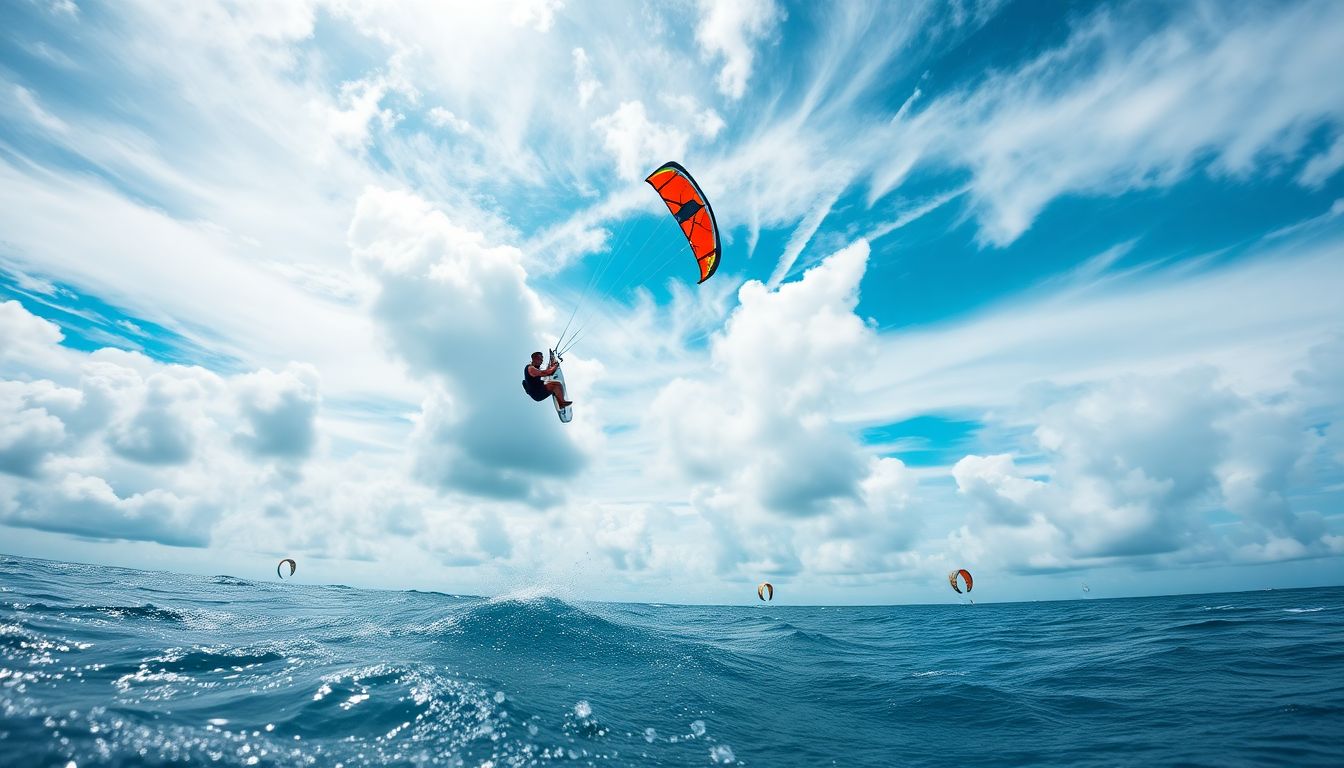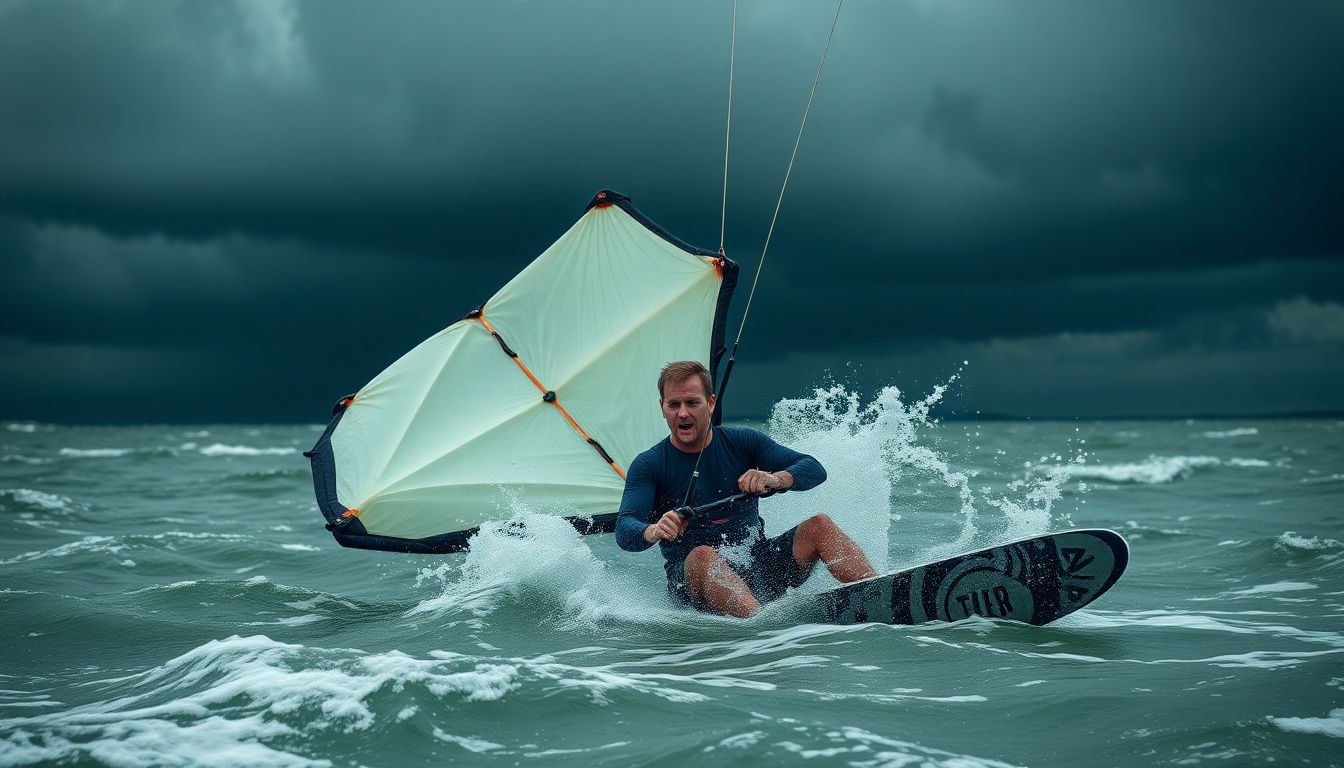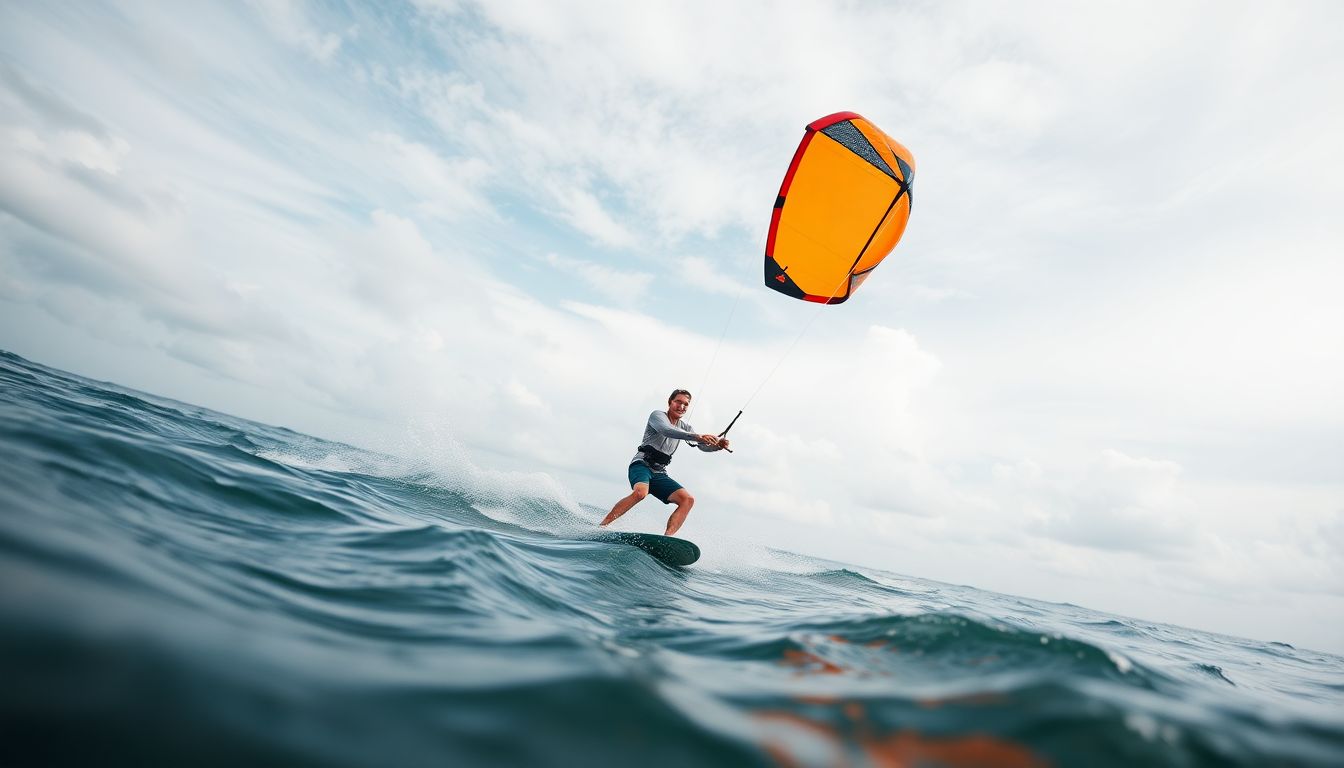Weather plays an essential role in kitesurfing. For some, it’s a powerful partner; for others, it can be a challenging adversary. Understanding the elements that impact your ride can mean the difference between an exhilarating session or a risky one.
[Also see our article: A Beginner’s Guide to Choosing the Right Kitesurfing Gear].
The Thrill and the Risk: A Balancing Act
Kitesurfing offers an unmatched thrill, but with that excitement comes potential danger. The wind can propel you high in the air or crash you down if conditions change unexpectedly. Being aware of the weather can enhance your enjoyment while keeping you safe.
Weather’s Impact on Your Kitesurfing Experience: Safety First
Before heading out, assess the weather. Ignoring the forecast could lead to dangerous situations, such as gusty winds or sudden storms. Safety should always come first; know when to ride and when to stay on shore.
Setting the Stage: Understanding Your Role in Weather Awareness
Every kitesurfing session should start with a weather check. Understanding that you have a role in monitoring conditions can empower you to make better choices. Knowledge is key to having fun without facing unnecessary risks.
Wind: Your Kitesurfing Engine
The wind is the main driving force behind kitesurfing. Without it, your board and kite are virtually useless. Knowing how to read the wind can transform your ride.
Wind Speed and Direction: Decoding the Forecast
- Wind Speed: Ideal kiting speeds usually range from 12 to 25 knots, depending on your skill level and kite size.
- Wind Direction: Also crucial, the best winds blow onshore or sideshore to ensure safety.
Wind Gusts and Lulls: Riding the Rhythms of Nature
Wind conditions can change quickly. Gusts can lift you higher, while lulls may stall your kite. Learning to feel these shifts helps you anticipate your next move.
Choosing the Right Spot Based on Wind Conditions: Local Knowledge is Key
Each location has its unique wind patterns. Local experts can guide you to the best spots. When in doubt, ask experienced riders; they often have invaluable insights.

Water Conditions: Beyond the Waves
The water is as important as the wind. Understanding its state can greatly improve your experience.
Wave Height and Type: Navigating the Ocean’s Power
Beginners may prefer smaller, gentle waves while more skilled riders might seek out larger, challenging swells. Knowing what to expect will let you prepare your board and mindset.
Water Temperature: Staying Comfortable and Safe
- Warm Water: Ideal for longer sessions.
- Cold Water: Wetsuits or drysuits are crucial for safety and comfort.
Currents and Tides: Understanding the Hidden Forces
Currents can affect your ride more than you think. Check tidal schedules to optimize your session and avoid being carried away or swept off course.
Air Temperature and Humidity: Comfort and Performance
Air conditions can directly influence your performance on the water.
Impact on Rider Performance: Heat, Cold, and Focus
- Hot Days: Hydration is essential for maintaining focus.
- Cold Conditions: Dress appropriately to ward off the chill.
Dressing for Success: Layering for Variable Conditions
Use layers to adapt to changing temperatures. A good base layer can regulate your body heat while keeping you agile on the water.
Sun Protection: Shielding Yourself from the Elements
Don’t forget about sun safety. Sunscreen, hats, and UV-protective clothing can help prevent skin damage during long sessions under the sun.
Cloud Cover and Precipitation: Unexpected Challenges
Weather can be unpredictable. Cloud cover and rain can change your plans without warning.
Recognizing Storm Clouds: Avoiding Dangerous Situations
Learning to identify storm clouds can save your life. If you see dark clouds forming, it might be best to postpone your session.
Dealing with Rain: Staying Dry and Riding On
Light rain typically doesn’t hinder kitesurfing. However, be cautious of storms, which can create dangerous conditions.
Impact of Low Visibility: Safety Precautions
In situations of low visibility, assess your surroundings carefully. It’s essential to avoid collisions and maintain control over your kite.
Weather Forecasting Tools and Resources: Planning Your Session
Planning ahead can make all the difference. Use the right tools to stay informed.
Utilizing Weather Apps and Websites: Essential Resources
Apps like Windy or Windfinder provide real-time updates on wind speed and direction. Bookmark reliable resources on your phone for easy access.
Interpreting Meteorological Data: Understanding the Jargon
Learning a few weather terms can help you interpret data more effectively. Familiarize yourself with terms like “gusts,” “sustained wind,” and “chop” for better understanding.
Checking Local Conditions: Real-Time Updates from Experts
Local forums and social media groups often share immediate weather updates. Tapping into these resources can keep you a step ahead.
Conclusion: Ride Smart, Ride Safe
Mastering the elements can lead to truly epic kitesurfing adventures.
Key Takeaways: Mastering Weather for Safer, More Rewarding Kitesurfing
- Prioritize Safety: Always check the weather before launching.
- Know Your Environment: Understanding local conditions is vital.
- Stay Prepared: Gear up appropriately for varying factors.
Resources: Further Reading and Expert Insights
- Consider reading kitesurfing blogs or forums for shared experiences.
- Follow meteorologists to get precise weather updates and tips tailored for kitesurfing enthusiasts. For more see here.
With this knowledge, your kitesurfing sessions can be more enjoyable and safer. Embrace the elements, stay informed, and ride smart!








